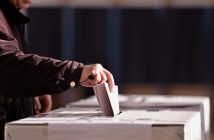What are forex trading hours?
The forex market is open 24 hours, 5 days a week, but each day is broken into several trading sessions.

The first session is widely known as the Asia-Pacific session. Australia starts the trading day, with Sydney opening from 9pm to 6am the following day, followed by Japan from 11pm to 8am, and then joined by Hong Kong and Singapore. Then comes Europe, with London, opening at 7am and closing at 4pm and finally, the US concludes the day, with New York opening from 12pm to 9pm. At this point forex volatility will begin to wind down before the whole process begins anew a few hours later.
*It is important to note that forex trading hours can vary in March, April, October and November, as countries shift to daylight savings time (DST).
Why are trading hours important?
Trading hours often define market volatility. It is a simple yet fundamental factor to forex trading that many traders tend to forget. Intraday traders in particular, rely on volatility within the trading day itself to increase their P&L. By definition, FX traders that are looking to open and close trades within one session need price movement.
The beginning of each trading session is when the big institutions, such as Central Banks release their monthly and yearly data or meet to make important monetary decisions. UK’s major data releases come out at 9-9.30am, while the US tends to publish its numbers between 12.30 pm and 3.30pm. These announcements can generate significant volatility in and of themselves, so every forex trader needs to know when they are published and have at minimum a basic understanding of what the final numbers mean. For example when a Central Bank decides to increase its key interest rate this can have a positive effect on the local currency as it signals that the economy is growing.
BDSwiss provides a detailed Economic Calendar in which all major events and data releases are listed and highlighted in terms of importance.
Is there a best time to trade?
Truth is that there is no such thing as a ‘perfect’ time period within which one can trade forex, but there will be times that are perhaps better than others for some specific forex pairs. Unsurprisingly, each forex pair is most active when at least one of its markets is open. For example, USD/JPY will be busiest during the Asian and US sessions, while the EUR/USD will be at its most volatile when the European and US sessions overlap.
*Source: Bloomberg








